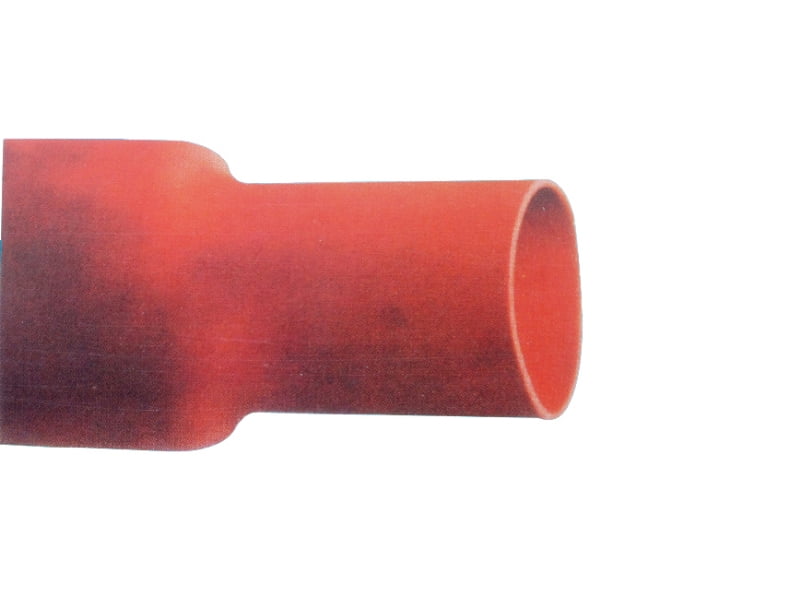Silicone Rubber Heat Shrinkable Tube: Properties, Applications, and Maintenance
Introduction
Silicone Rubber Heat Shrinkable Tube is a specialized polymer tubing designed to shrink radially when exposed to heat, providing insulation, protection, and strain relief in electrical and mechanical applications. It is composed of high-quality silicone rubber, offering exceptional thermal stability, flexibility, and chemical resistance. This tubing is widely used in industries such as aerospace, automotive, electronics, and medical devices due to its unique properties.

Key Characteristics and Technical Data
1. High Temperature Resistance
Silicone rubber heat shrinkable tubes can withstand extreme temperatures ranging from -60°C to 200°C, with some specialized variants enduring up to 260°C for short durations. The material retains its elasticity and mechanical properties even under prolonged exposure to high heat, making it ideal for applications near engines, exhaust systems, or industrial heating elements.
2. Excellent Electrical Insulation
With a dielectric strength of ≥20 kV/mm and volume resistivity of ≥1014 Ω·cm, Silicone Rubber Tubes provide superior electrical insulation. They are UL 224 and RoHS compliant, ensuring safety in high-voltage environments such as power distribution systems and electric vehicle components.
3. Chemical and Environmental Resistance
These tubes exhibit outstanding resistance to oils, acids, alkalis, and UV radiation. They maintain performance in harsh environments, with a water absorption rate of <0.1% after 24 hours of immersion. The material also meets UL 94 V-0 flammability standards.
4. Shrink Ratio and Mechanical Properties
Standard silicone heat Shrink Tubes offer a 2:1 or 3:1 shrink ratio, with wall thicknesses ranging from 0.5mm to 3.0mm. The tensile strength typically exceeds 8 MPa, with elongation at break of >400%, ensuring durability in dynamic applications.
Application Scenarios
1. Aerospace and Aviation
Used for wire harness protection in aircraft, where components must withstand temperature fluctuations from -55°C to 200°C while resisting jet fuels and hydraulic fluids.
2. Automotive Industry
Applied in electric vehicle battery packs, motor windings, and high-temperature cable protection, meeting ISO 6722 and LV 112-1 standards for automotive wiring.
3. Medical Equipment
Sterilizable tubing for surgical instruments and diagnostic devices, compliant with USP Class VI and ISO 10993 biocompatibility standards.
4. Industrial Electronics
Protection for power semiconductors, transformers, and bus bars in industrial control systems, particularly where components generate significant heat.
5. Marine Applications
Saltwater-resistant insulation for shipboard electrical systems, withstanding constant moisture exposure and temperature variations.
Installation and Maintenance Guidelines
Proper Installation Techniques
1. Tube Selection: Choose a tube with an expanded inner diameter 20-30% larger than the object to be covered.
2. Surface Preparation: Clean the substrate with isopropyl alcohol to remove contaminants.
3. Heating Process: Use a heat gun at 150-200°C, moving constantly to avoid hotspots. For uniform shrinkage, rotate the part during heating.
4. Cooling: Allow the tube to cool naturally; avoid forced cooling which may cause stress cracks.
Maintenance Best Practices
1. Regular Inspection: Check for cracks, discoloration, or hardness changes every 6-12 months in critical applications.
2. Cleaning: Use mild soap solutions; avoid abrasive cleaners or solvents that may degrade silicone.
3. Replacement Indicators: Replace tubing if shore hardness increases by >15 points or if visible damage occurs.
4. Storage Conditions: Keep in original packaging at <40°C and <70% RH to prevent premature aging.
Troubleshooting Common Issues
Problem: Incomplete shrinkage
Solution: Increase heat gradually; ensure proper tube sizing
Problem: Surface tackiness
Solution: Verify material grade; some medical-grade silicones remain slightly tacky
Problem: Uneven shrinkage
Solution: Use rotational heating fixtures for consistent application
Material Standards and Certifications
Silicone rubber heat shrink tubes typically comply with:
- UL 224 (Electrical Insulation)
- RoHS/REACH (Environmental Compliance)
- MIL-DTL-23053/4 (Military Specifications)
- ASTM D2671 (Standard Test Methods)




 English
English

